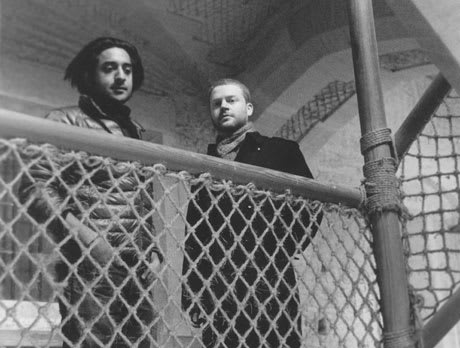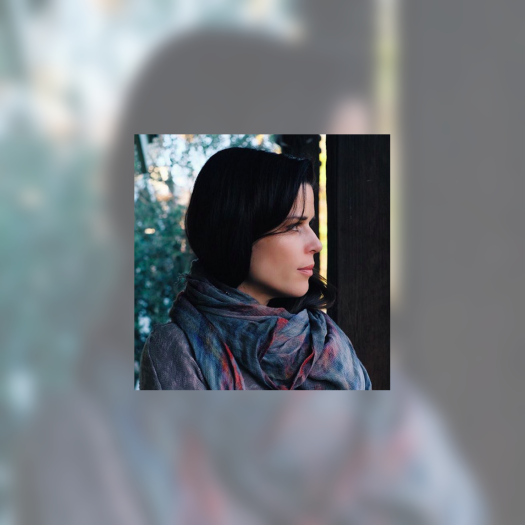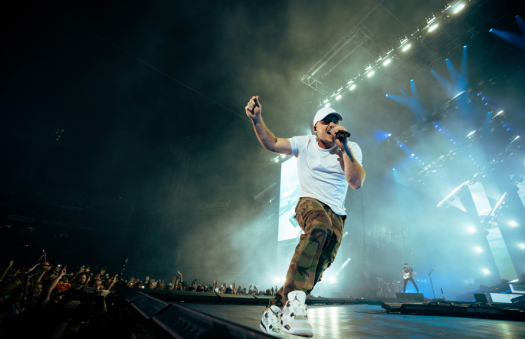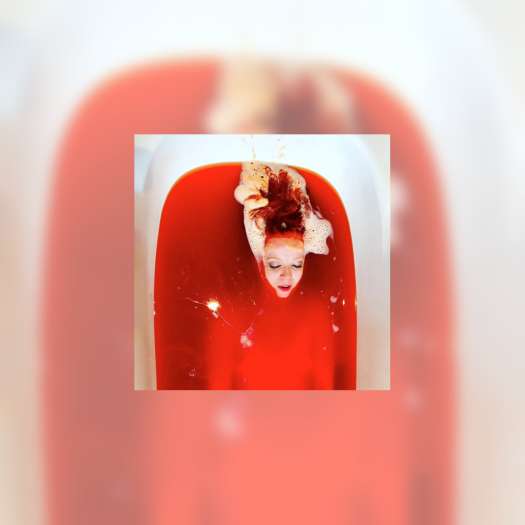Medium is the third release from Bristol, UK-based Emptyset (aka James Ginzburg and Paul Purgas) and is the first recorded live. Spanning just five tracks and a mere 21 minutes, it was recorded on location in a remote mansion in rural Gloucestershire, UK. The project, supported by the Woodchester Mansion Trust, was recorded by sound engineer Mat Sampson, who used careful microphone placement to reflect the intricate details of the space, adding texture to the sparse layers of sine waves and distortion. Spooky and even more compositionally minimal than the bass glitch duo's previous work, it is a welcome stop-gap between albums and further evidence of Emptyset's intent to ceaselessly experiment and explore new avenues for their unique sound.
How did you and Paul meet?
Ginzburg: We (Pinch, James Fiddian and myself) had started running Multiverse (a network of labels, a publishing company and studio) out of my flat in Bristol in 2004 and had set up the studio in the attic, a terrible idea, as the flat was in a quiet residential neighbourhood with extremely nosey, sensitive and caustic neighbours. We even had the hubris to advertise. Paul was one of the few people to get in touch, having got our number from the phone book. He had just moved back to Bristol from London to work as a curator at the Arnolfini Gallery and was looking to develop some ideas he had for tracks and, in the end, we ended up having a few exceptionally productive and enjoyable sessions. After a gap of about six months, and in a rare moment of good will, I called him up and suggested we work on a collaborative basis and develop a project.
This mini-album was your first that was recorded live, correct? What was the context for this change in process?
In a manner of speaking, it was the first we recorded live. On previous albums, we had already been experimenting with amplifying tracks into rooms in the studio, re-recording them and using the recordings as textural layers, but then we struck upon the idea of using large physical spaces as textural processors. In other words, to amplify sound into space, mic it up and feed it back in on itself in various ways is more or less comparable to running sound through a outboard studio processor such as a compressor or EQ, but rather than hearing the sonic artefacts of a circuit in a box, you end up with spatial and architectural artefacts. Paul and I had visited Woodchester Mansion, which is about 45 minutes outside of Bristol, a few times and we were fascinated with it as a structure. It is an enormous, neo-gothic mansion that was built in the late 1800s, but never completed due to the untimely death of the owner. It has been left with its external structure complete, but with only about 25-percent internal completion, so stairs lead nowhere and there are fireplaces suspended in mid-air, etc. It is the closet thing to a M.C. Escher painting in physical form I've come across. Nowadays, it is a bat sanctuary, a place for a local stone masonry school to teach and practice restoration, and is occasionally a site of physic research due to its reputation as a haunted building. We decided to approach the Woodchester Mansion Trust about using the house for a day to try and put some of our theoretical ideas into practice and they very kindly allowed us to record. The choice was as much about the particularly interesting reverberations we found in certain rooms as it was about how inspiring we find the place.
Was the album prepared for the space or improvised around it?
We brought very basic, un-arranged rhythmic structures and amplified them into the space while setting up and manipulating feedback processes in real time and recorded the results with vintage microphones placed around the environment. We then edited the results from a few takes. At certain points, we just experimented with feedback and from that derived the drone passages that sit between the five pieces.
I hear a lot of Raster-Noton in your music, as well as a lot of UK bass. What other influences are notable for you?
Oddly, Paul and I don't really discuss influences with each other. In fact, we hardly ever talk about music. Primarily, Emptyset are aesthetically about starting with a simple sonic proposition and exploring and developing that proposition iteration by iteration in as non-referential a manner as possible. Paul often puts the brakes on what we are working on when he feels we have left the boundaries of the Emptyset sound world, and I might argue that an idea is in the world or agree with him. And while I'm sure there are many moments and influences that have created that irrational sense of rightness or wrongness that steer our individual aesthetic decisions, they are left in the realm of the subconscious rather than forming an explicit part of our process. That said, Paul comes from a background of having intensely and passionately listened to Chicago and Detroit house and techno and its European counterparts since he was a child, and I love Herbie Hancock's "Man-Child" and Simon and Garfunkel.
What else has been happening for you guys?
Paul has been living on and off in Stockholm, working on a few art events he is curating and collaborating with UK experimental artist Shelley Parker on gallery-based sound art performances. Besides running Multiverse, I have been working on my song-based folk project, producing tracks for former Groove Armada singer Saint Saviour, occasionally touring my Ginz project, which sits in the realms of UK bass, and am about to go live in a cabin on a small Arctic Norwegian island for a month to work on a writing project. Musically, we are developing a release for the Raster-Noton label and are researching material for a third full-length album while continuing to collaborate with video artists Clayton Welham and Sam Williams on the visual side. So far the collaboration has yielded two videos: one for the track "Function," from our Demiurge LP, and one for the title track of our new release, "Medium," which is made up of footage shot at Woodchester Mansion. Both of the videos can be seen on The Wire Magazine's Vimeo. What is particularly exciting for us about working with Clayton and Sam is that they are working to mirror our production processes by transposing them into the visual realm, and are primarily working with analog feedback, transmitters and receivers.
Anything in the UK underground that's caught your attention lately?
I'm a massive fan of Roly Porter [formerly half of Vex'd], but that isn't a particularly fair answer, as he's on Multiverse's Subtext imprint. Other than that, I really enjoy the Modern Love output, particularly Andy Stott's music.
Read a review of Medium here.
How did you and Paul meet?
Ginzburg: We (Pinch, James Fiddian and myself) had started running Multiverse (a network of labels, a publishing company and studio) out of my flat in Bristol in 2004 and had set up the studio in the attic, a terrible idea, as the flat was in a quiet residential neighbourhood with extremely nosey, sensitive and caustic neighbours. We even had the hubris to advertise. Paul was one of the few people to get in touch, having got our number from the phone book. He had just moved back to Bristol from London to work as a curator at the Arnolfini Gallery and was looking to develop some ideas he had for tracks and, in the end, we ended up having a few exceptionally productive and enjoyable sessions. After a gap of about six months, and in a rare moment of good will, I called him up and suggested we work on a collaborative basis and develop a project.
This mini-album was your first that was recorded live, correct? What was the context for this change in process?
In a manner of speaking, it was the first we recorded live. On previous albums, we had already been experimenting with amplifying tracks into rooms in the studio, re-recording them and using the recordings as textural layers, but then we struck upon the idea of using large physical spaces as textural processors. In other words, to amplify sound into space, mic it up and feed it back in on itself in various ways is more or less comparable to running sound through a outboard studio processor such as a compressor or EQ, but rather than hearing the sonic artefacts of a circuit in a box, you end up with spatial and architectural artefacts. Paul and I had visited Woodchester Mansion, which is about 45 minutes outside of Bristol, a few times and we were fascinated with it as a structure. It is an enormous, neo-gothic mansion that was built in the late 1800s, but never completed due to the untimely death of the owner. It has been left with its external structure complete, but with only about 25-percent internal completion, so stairs lead nowhere and there are fireplaces suspended in mid-air, etc. It is the closet thing to a M.C. Escher painting in physical form I've come across. Nowadays, it is a bat sanctuary, a place for a local stone masonry school to teach and practice restoration, and is occasionally a site of physic research due to its reputation as a haunted building. We decided to approach the Woodchester Mansion Trust about using the house for a day to try and put some of our theoretical ideas into practice and they very kindly allowed us to record. The choice was as much about the particularly interesting reverberations we found in certain rooms as it was about how inspiring we find the place.
Was the album prepared for the space or improvised around it?
We brought very basic, un-arranged rhythmic structures and amplified them into the space while setting up and manipulating feedback processes in real time and recorded the results with vintage microphones placed around the environment. We then edited the results from a few takes. At certain points, we just experimented with feedback and from that derived the drone passages that sit between the five pieces.
I hear a lot of Raster-Noton in your music, as well as a lot of UK bass. What other influences are notable for you?
Oddly, Paul and I don't really discuss influences with each other. In fact, we hardly ever talk about music. Primarily, Emptyset are aesthetically about starting with a simple sonic proposition and exploring and developing that proposition iteration by iteration in as non-referential a manner as possible. Paul often puts the brakes on what we are working on when he feels we have left the boundaries of the Emptyset sound world, and I might argue that an idea is in the world or agree with him. And while I'm sure there are many moments and influences that have created that irrational sense of rightness or wrongness that steer our individual aesthetic decisions, they are left in the realm of the subconscious rather than forming an explicit part of our process. That said, Paul comes from a background of having intensely and passionately listened to Chicago and Detroit house and techno and its European counterparts since he was a child, and I love Herbie Hancock's "Man-Child" and Simon and Garfunkel.
What else has been happening for you guys?
Paul has been living on and off in Stockholm, working on a few art events he is curating and collaborating with UK experimental artist Shelley Parker on gallery-based sound art performances. Besides running Multiverse, I have been working on my song-based folk project, producing tracks for former Groove Armada singer Saint Saviour, occasionally touring my Ginz project, which sits in the realms of UK bass, and am about to go live in a cabin on a small Arctic Norwegian island for a month to work on a writing project. Musically, we are developing a release for the Raster-Noton label and are researching material for a third full-length album while continuing to collaborate with video artists Clayton Welham and Sam Williams on the visual side. So far the collaboration has yielded two videos: one for the track "Function," from our Demiurge LP, and one for the title track of our new release, "Medium," which is made up of footage shot at Woodchester Mansion. Both of the videos can be seen on The Wire Magazine's Vimeo. What is particularly exciting for us about working with Clayton and Sam is that they are working to mirror our production processes by transposing them into the visual realm, and are primarily working with analog feedback, transmitters and receivers.
Anything in the UK underground that's caught your attention lately?
I'm a massive fan of Roly Porter [formerly half of Vex'd], but that isn't a particularly fair answer, as he's on Multiverse's Subtext imprint. Other than that, I really enjoy the Modern Love output, particularly Andy Stott's music.
Read a review of Medium here.




